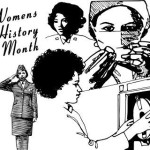Why Do We Celebrate International Women’s Day?
International Women’s Day celebrates women around the world. However, a day honoring the accomplishments and rights of women is not a new event.
Learn the history of International Women’s Day and how the annual theme honors and motivates women to continue the fight for change.
History Of International Women’s Day
The struggle to recognize women and to give women the same rights as men has not been an easy one. Records indicate that as far back as 1908, women began talking amongst themselves and meeting to organize campaigns against the oppression and inequality of women. Thousands of women marched through the streets of New York City demanding equal pay, shorter working hours and voting rights.
The following year, in 1909, the first National Women’s Day took place in the U.S., with celebrations occurring through 1913.
The International Women’s Day site points out that at the 1910 International Conference of Working Women in Copenhagen, Clara Zetkin , the leader of Germany’s ‘Women’s Office’ for the Social Democratic Party presented the idea of having one day, the same day, in every country to celebrate women and to press forward with demands of women to be treated as equals.
The following year, however, only some countries set aside March 19 as a day to honor women, demand an end to discrimination, the right of women to work at a decent wage, hold public office and to vote.
Later that month, the fire that killed more than 100 women at the Triangle Shirtwaist Factory in New York City drew attention to poor working conditions for women in the United States and became a focal point for future International Women’s Day events. Women finally decided on March 8 as the one day for women across the globe to celebrate International Women’s Day.
In 1945, The Charter of the United Nations became the first official international agreement affirming equality between women and men.
The United Nations Joins The Celebrations
In 1975, the United Nations celebrated IWD for the first time. In 1996, the UN commenced with proclaiming an annual theme for each International Women’s Day. For example, the United Nations proclaimed the 2017 theme as “Women in the Changing World of Work: Planet 50-50 by 2030”.
The UN asks women (and interested men) to recognize IWD as a time for reflection on progress made thus far. The United Nations also asks people around the world to focus on the goals of the 2030 Agenda. It includes ensuring that all girls and boys have equal access to early childhood development and education, that all girls and boys have equal access to free primary and secondary education, ends all discrimination against girls and women. The 2030 Agenda also strives to end sex trafficking, violence and harmful actions against women.
The UN also invites people to celebrate social, political, cultural economic achievements of women around the world.
IWD: Looking Towards The Future
International Women’s Day helps to acknowledge significant advances made in the fight for women to achieve equality and to recognize achievements made by women. However, although women now hold crucial roles in many governments, boardrooms and serve as role models, some girls and women still undergo arranged marriages, child marriage, extreme control by some cultures, mutilation and violence.
The celebration of International Women’s Day every year, with each new theme, recognizes that although significant strides have been made, there is still much work to do to achieve equal rights, equal pay and a general overall recognition of equality towards women.
Local, state, country and international events and opportunities to participate exist for women to take part and make their voice heard. To take a short, yet strong quote from the IWD site, “Think globally and act locally!”







